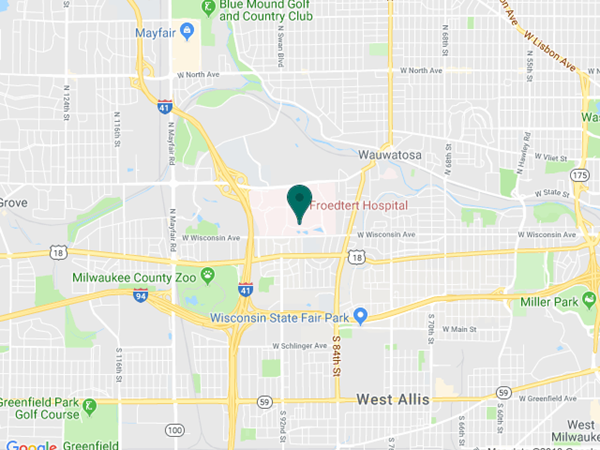Condon Hernia Institute
The Robert E. Condon Hernia Institute is a collaborative, multidisciplinary program comprised of clinicians dedicated to hernia repair. Our team is made up of surgeons who specialize in hernia repair surgery, radiologists, plastic surgeons, and nurses.
We Care About Quality
Surgeons in the Division of Minimally Invasive and Gastrointestinal Surgery at the Medical College of Wisconsin who are a part of the Condon Hernia Institute are actively engaged in the Americas Hernia Society Quality Collaborative. The Americas Hernia Society Quality Collaborative (AHSQC) aims to “improve the value in hernia care delivered to patients. Formed in 2013 by hernia surgeons in private practice and academic settings, the AHSQC utilizes concepts of continuous quality improvement to improve outcomes and optimize costs. This is accomplished through patient-centered data collection, ongoing performance feedback to clinicians, and improvement based on analysis of collected data and collaborative learning. The AHSQC fulfills the Americas Hernia Society mission of providing the right operation for the right patient and the right time.”
Our Mission
The mission of the Condon Hernia Institute is to promote excellence in hernia surgery outcomes. We strive to provide the latest and most advanced techniques in hernia repair. Our objective is to allow our patients to work with us to tailor a treatment plan that is right for them – whether their hernia is simple or complex.
About Dr. Condon
The name Condon is synonymous with hernia repair. Dr. Condon was Chair of the Department of Surgery at the Medical College of Wisconsin from 1979-1997. He came to the College in 1972 from the University of Iowa College of Medicine in Iowa City. Prior to that, he was a member of the faculty of the University of Washington, Baylor University, and the University of Illinois in Chicago. Dr. Condon completed a residency in General Surgery at the University of Washington after graduating from the University of Rochester School of Medicine and Dentistry. Dr. Condon has published countless articles and book chapters on the topic of hernia repair. Most notably, he was co-editor with another champion of hernia repair, Lloyd M. Nyhus, MD of the textbook simply titled Hernia. This text has been the definitive reference for hernia repairs for over 30 years. Dr. Condon's illustrious career at the Medical College of Wisconsin made him one of the premier voices in the world of hernia repair. We are pleased that Dr. Condon has graciously allowed us to honor his name in the creation of this new Froedtert & the Medical College of Wisconsin Center of Excellence.
Types of Hernias
Contact the Condon Hernia Institute
Center for Advanced Care
Surgical Specialties Clinic
8900 W. Doyne Ave.
Milwaukee, WI 53226
Minimally Invasive and Gastrointestinal Surgery
Clinic and Patient Appointments
(414) 955-5751
(414) 955-0085 (fax)
(414) 955-5751
(414) 955-0085 (fax)
Mailing address:
Medical College of Wisconsin
Division of Minimally Invasive and Gastrointestinal Surgery
8701 Watertown Plank Rd.
Milwaukee, WI 53226


